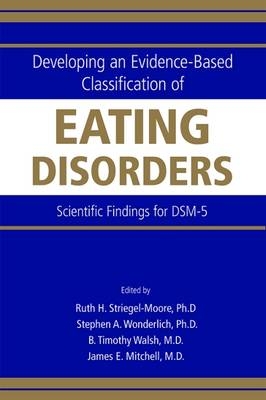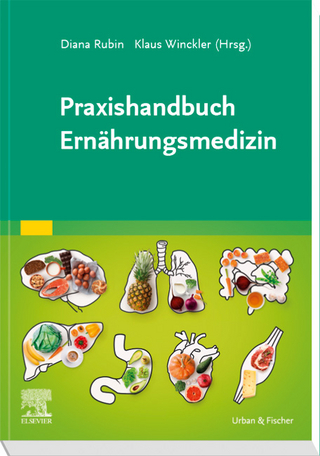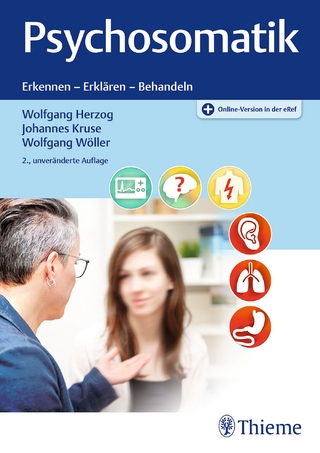
Developing an Evidence-Based Classification of Eating Disorders
American Psychiatric Association Publishing (Verlag)
978-0-89042-666-1 (ISBN)
The culmination of several years of collaborative effort among eating disorders investigators from around the world, Developing an Evidence-Based Classification of Eating Disorders: Scientific Findings for DSM-5 provides summaries of the research presentations and discussions of the conceptual and methodological issues involved in diagnosing and classifying eating disorders. The mission of the DSM-5 Eating Disorder Work Group was to improve the clinical utility of eating disorder diagnoses by recommending revisions based on sound empirical evidence. Although the objective was to provide empirical information to the DSM-5 Eating Disorders Work Group, the research presented in this book should be invaluable to the eating disorders research and clinical community at large and, by extension, to their patients.
Eating disorders are serious, difficult to treat, and often lead to multiple medical complications, high rates of psychiatric comorbidity, and mortality. It is critical, then, that clinicians be aware of the most current research, as well as understand the foundation of the soon-to-be-released DSM-5.
Improving the definition of symptoms and syndromes is one of the critical challenges the authors tackle—in particular the validity of the eating disorders not otherwise specified category, into which 60% of patients diagnosed with an eating disorder now fall. In addition, other mental disorders, particularly mood disorders and anxiety disorders, co-occur at a higher rate than would be expected. These findings indicate the need for greater specificity in the nosology, an issue which the investigators address. Other topics addressed include:
• Eating disorders in children and adolescents, including diagnostic differences and classification. Also included is a chapter on the validity of applying a classification for feeding disorders in infants and young children, as well as one that covers latent profile analysis to identify eating disorder phenotypes in the adolescent population.
• Cultural considerations and cross-cultural variation in the classification of eating disorders, including Native American, Japanese, Canadian, and Pacific Fijian populations.
• A discussion of non-fat-phobic anorexia nervosa and its suitability for inclusion in DSM-5.
• Current and future directions for the assessment of the cognitive criteria for anorexia nervosa.
• A chapter on loss of control eating, including implications for future weight gain, depression, binge drinking, and substance abuse.
Key terms, references, summaries, charts, tables, and other illustrative features are abundant and assist the reader in understanding the research and putting it in context. Developing an Evidence-Based Classification of Eating Disorders: Scientific Findings for DSM-5 is required reading for both investigators and clinicians in the rapidly evolving field of eating disorders.
Ruth H. Striegel-Moore, Ph.D., is Professor of Psychology and Walter A. Crowell University Professor of the Social Sciences at Wesleyan University in Middletown, Connecticut. Stephen A. Wonderlich, Ph.D., is Chester Fritz Distinguished Professor and Associate Chairman of the Department of Clinical Neuroscience at the University of North Dakota School of Medicine and Health Sciences; and Director of Clinical Research at the Neuropsychiatric Research Institute in Fargo, North Dakota. B. Timothy Walsh, M.D., is Ruane Professor of Pediatric Psychopharmacology in Psychiatry in the Department of Psychiatry at the College of Physicians and Surgeons of Columbia University; and Director of the Division of Clinical Therapeutics at the New York State Psychiatric Institute in New York City. James E. Mitchell, M.D., is Christoferson Professor and Chair of the Department of Clinical Neuroscience; Chester Fritz Distinguished University Professor at the University of North Dakota School of Medicine and Health Sciences; and President and Scientific Director of the Neuropsychiatric Research Institute in Fargo, North Dakota.
Foreword. Introduction. Part 1: Improving the Definition of Symptoms and Syndromes of Eating Disorders. Rethinking the nosology of eating disorders. Eating disorder not otherwise specified: theoretical and empirical advances since the publication of a meta-analysis covering 1987-2007. Current and future directions for the assessment of the cognitive criteria for anorexia nervosa. Characterization, significance, and predictive validity of binge size in binge eating disorder. Eating behavior in obese binge eating disoder, obese non-binge eating disorder, and non-obese control participants: a naturalistic study. Loss-of-control eating as a predictor of weight gain and the development of overweight, depressive symptoms, binge drinking, and substance use. Part 2: Empirical Approaches to Classification: Methodological Considerations and Research Findings. Empirical approaches to the classification of eating disorders. Latent structure analyses of eating disorder diagnoses: critical review of results and methodological issues. Empirical taxonomy of patients with eating disorders. Validating eating disorder classification models with mortality and recovery data. Latent structure of bulimic syndromes: an empirical approach utilizing latent profile analyses and taxometric analyses. Part 3: Eating and Feeding Disorders in Childhood and Adolescence. Classification of eating disturbance in children and adolescents: proposed changes for DSM-5. Validation of a diagnostic classification of feeding disorders in infants and young children. Eating disorders in children and adolescents: diagnostic differences and clinical challenges. Loss of control over eating in children and adolescents. Diagnostic classification of eating disorders in children and adolescents: how does DSM-IV-TR compare to empirically derived categories? Part 4: Cultural Considerations in the Classification of Eating Disorders. Culture and eating disorders classification. Eating disorders in Native American populations: a review of prevalence studies. Eating disorder symptoms of Native American and white adolescents. Should non-fat-phobic anorexia nervosa be included in the DSM-5? Eating disorders in Japan: cultural context, clinical features and future directions. Comparison of female Japanese and Canadian eating disorder patients on the Eating Disorder Inventory. A latent profile analysis of the typology of bulimic symptoms in an indigenous Pacific population: evidence of cross-cultural variation in phenomenology. Index.
| Erscheint lt. Verlag | 23.4.2011 |
|---|---|
| Zusatzinfo | 59 Tables, unspecified; 18 Line drawings, black and white |
| Verlagsort | VA |
| Sprache | englisch |
| Maße | 152 x 229 mm |
| Gewicht | 689 g |
| Themenwelt | Medizin / Pharmazie ► Medizinische Fachgebiete ► Psychosomatik |
| Medizin / Pharmazie ► Medizinische Fachgebiete ► Psychiatrie / Psychotherapie | |
| ISBN-10 | 0-89042-666-X / 089042666X |
| ISBN-13 | 978-0-89042-666-1 / 9780890426661 |
| Zustand | Neuware |
| Haben Sie eine Frage zum Produkt? |
aus dem Bereich


